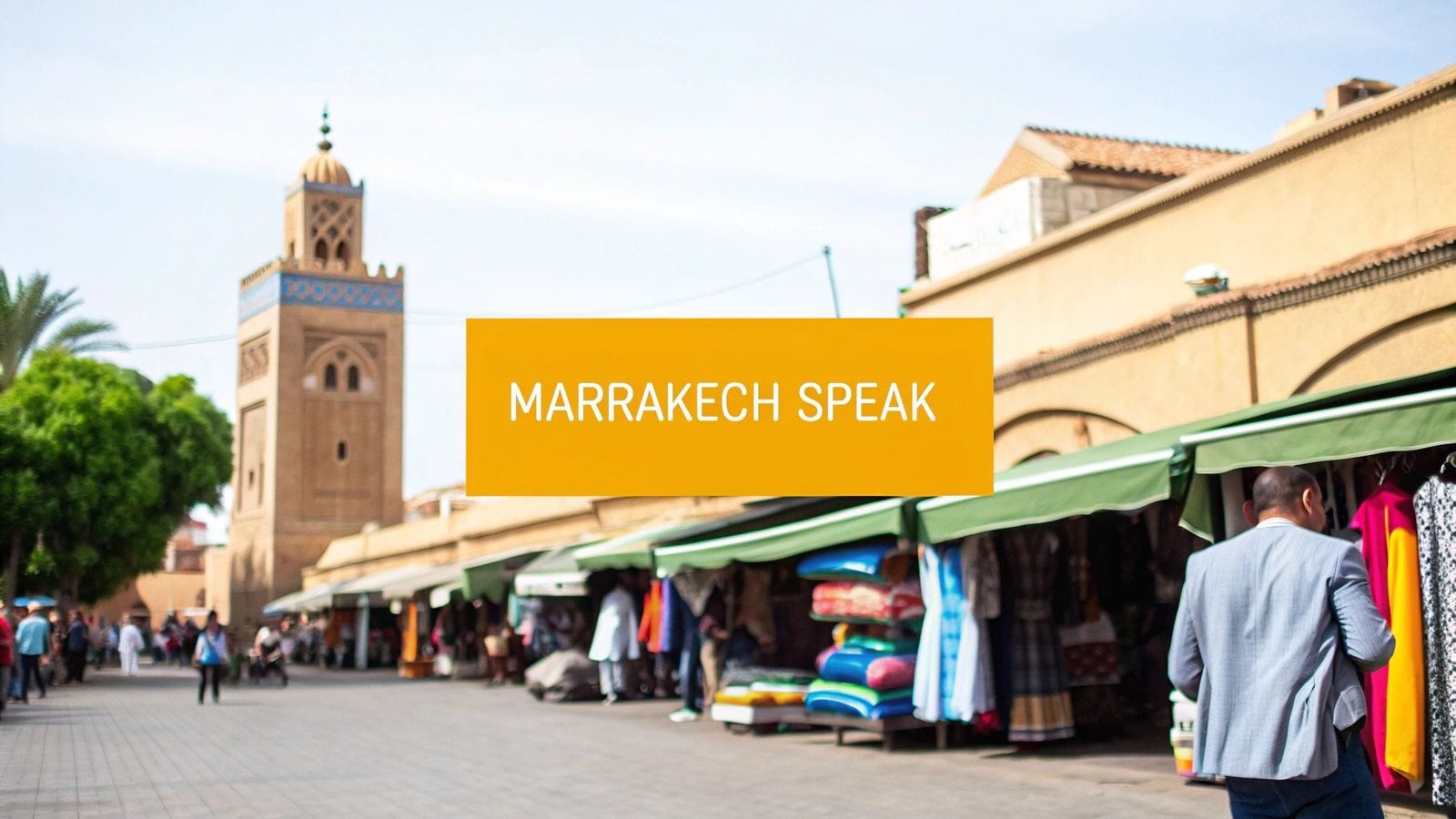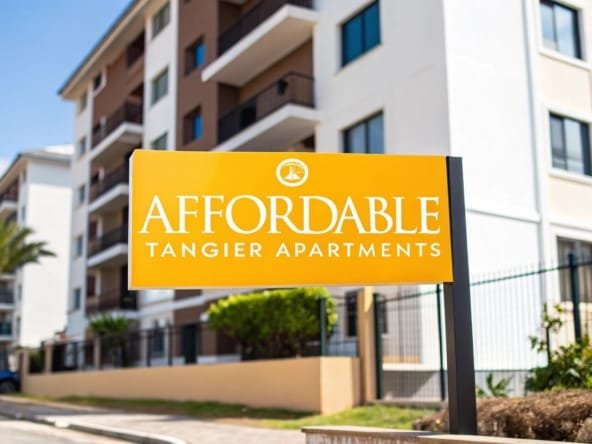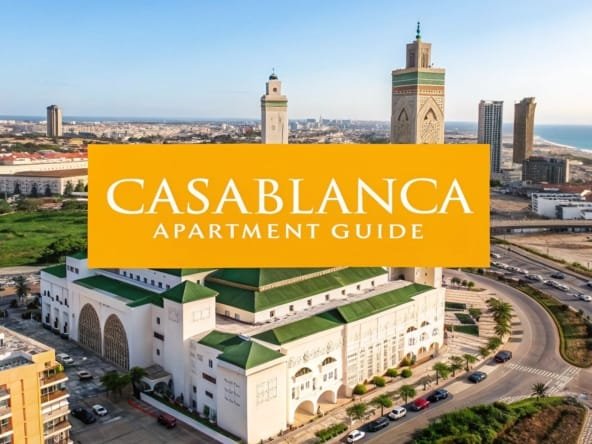The Linguistic Tapestry of Marrakech
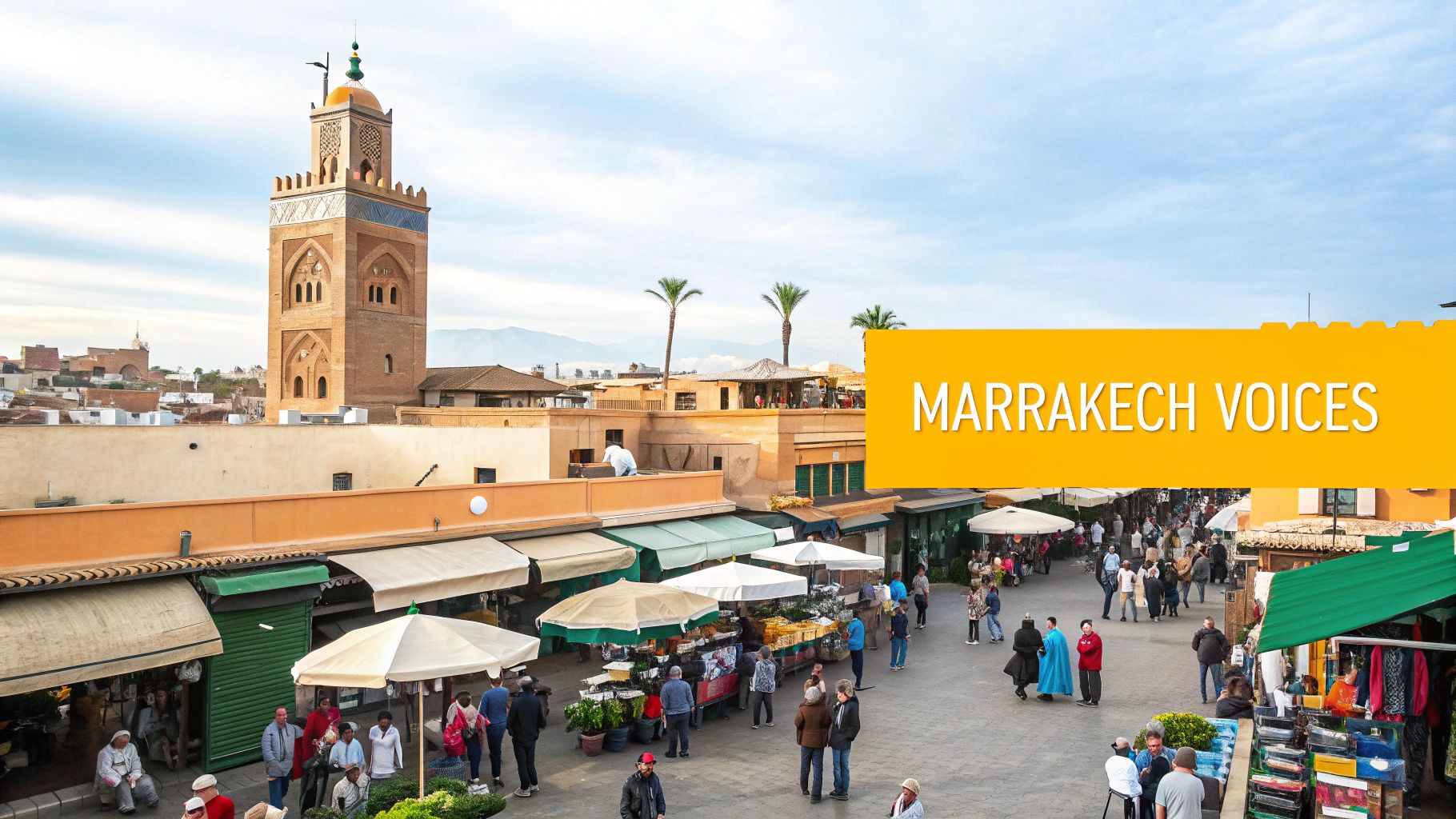
Stepping into Marrakech is like entering a vibrant marketplace of languages. While Modern Standard Arabic and Amazigh (Berber) are Morocco's official languages, Marrakech's daily linguistic reality is more nuanced. The city's linguistic landscape is a fascinating blend, shaped by its history, diverse population, and role as a global destination.
Moroccan Arabic (Darija): The Language of the Streets
The primary language you'll encounter in Marrakech is Moroccan Arabic, known as Darija. This is the language of the souks, the cafes, and everyday life. While a dialect of Arabic, it differs significantly from Modern Standard Arabic. Think of the distinctions between British and American English – similar, yet with unique vocabulary and pronunciation.
Darija serves a similar purpose, acting as the common tongue for diverse communities. Approximately 91.9% of Moroccans use Darija, especially informally. This percentage is even higher in Marrakech, a large urban center with a smaller Amazigh-speaking population than rural areas. This prevalence highlights its function as a lingua franca, bridging communication gaps.
This widespread use reflects its historical evolution, influenced by the 8th-century Arab conquests that established Arabic as a primary language. For most interactions in Marrakech, from bargaining in the markets to asking for directions, Darija is essential. Learn more about Moroccan language demographics here.
French: A Lingering Colonial Influence
While Darija dominates daily conversations, French maintains a significant presence, particularly in business, government, and tourism. This is a direct result of Morocco's colonial past. French is common in official settings, and many Moroccans, especially in the tourism sector, are fluent.
It often serves as the language of education and administration, reflecting social stratification often linked to language use. You'll hear locals seamlessly switching between Darija and French mid-conversation – a unique feature of Marrakchi communication.
Other Languages: Amazigh, English, and Beyond
Beyond Darija and French, other languages contribute to Marrakech’s linguistic diversity. Amazigh (Berber), Morocco's indigenous language, is spoken by some communities in and around Marrakech, representing a link to the region's pre-Arab history.
As a major tourist destination, English is increasingly prevalent, particularly in hotels, restaurants, and tourist areas. Many younger Marrakechis are learning English to cater to international visitors, further enriching the linguistic landscape.
To help illustrate the distribution and context of languages used in Marrakech, the following table provides a summary:
Languages Spoken in Marrakech
This table presents the primary languages spoken in Marrakech with percentage estimates of speakers and common contexts where each language is used.
| Language | Approximate % of Speakers | Common Usage Contexts |
|---|---|---|
| Moroccan Arabic (Darija) | 90%+ (Higher in urban Marrakech) | Daily conversations, markets, informal settings |
| French | (Widely understood, especially in tourism and business) | Business, government, tourism, education, administration |
| Amazigh (Berber) | (Smaller percentage, primarily in surrounding communities) | Some communities in and around Marrakech |
| English | (Increasingly common, especially among younger generations) | Hotels, restaurants, tourist areas |
Key insights from this table emphasize Darija's dominance in everyday communication, French's continued importance in formal settings, and the growing presence of English due to tourism. While Amazigh usage is less widespread in urban Marrakech, it remains a significant part of the broader cultural landscape.
Navigating the Language Landscape
Marrakech's linguistic diversity, while initially seeming complex, adds to the city’s charm. Learning basic Darija phrases can greatly enhance interactions with locals. Don't hesitate to ask for clarification if you're unsure which language is being used. Most people in Marrakech are multilingual and readily adapt to ensure clear communication.
Darija Decoded: Navigating Moroccan Arabic
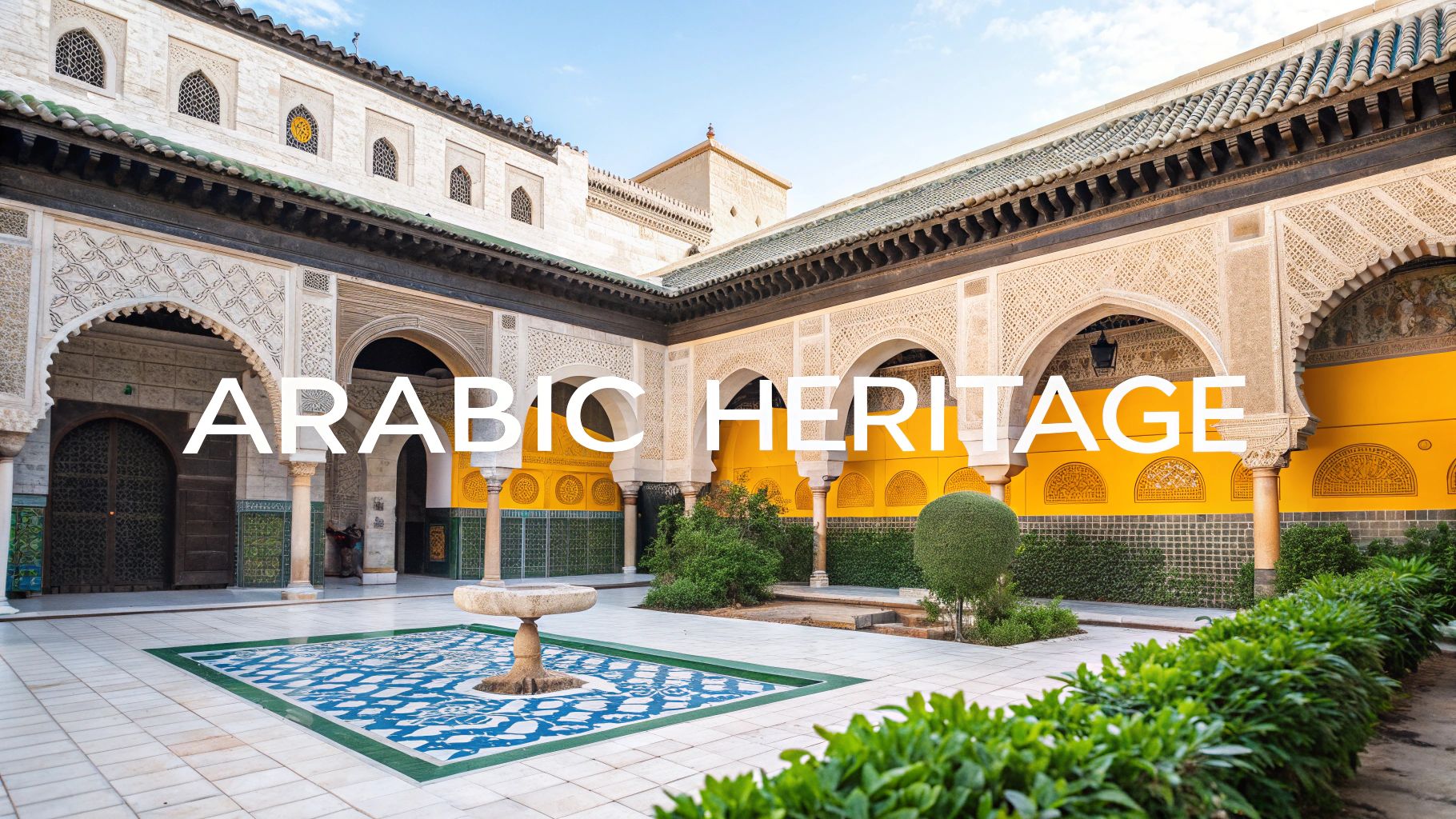
If you're planning a trip to Marrakech and wondering about the local language, the answer is multifaceted. While several languages are spoken, the heartbeat of daily communication is Darija, the Moroccan dialect of Arabic. More than just a language, Darija is the key to unlocking authentic cultural connections. This section explores the intricacies of this vibrant dialect and how it distinguishes Marrakech.
Understanding Darija: Beyond Textbook Arabic
While its roots lie in Arabic, Darija has absorbed influences from Berber languages, French, and Spanish, weaving a unique linguistic tapestry. Understanding Modern Standard Arabic provides a helpful foundation, but it won't fully prepare you for conversations in Marrakech's bustling souks or tranquil riads. Common greetings and phrases often take on distinct forms in Darija, adding a local touch to your interactions.
The Marrakchi Accent: A Local Twist
Like dialects of English that vary across regions, Darija also has regional nuances. The Marrakech version, known as Marrakchi Darija, boasts its own unique accent and expressions. This means that even within Morocco, the Darija spoken in Marrakech may differ subtly from that spoken in Fes or Casablanca. Learning a few Marrakchi-specific phrases will show locals that you're genuinely engaging with their culture.
Cultural Echoes in Everyday Phrases
Many Darija phrases reflect Marrakech's rich history and cultural exchange. Some expressions incorporate words borrowed from Berber languages, a testament to the region's indigenous heritage. Mastering these nuances deepens your understanding of the local culture and enriches your travel experience. Even the common greeting "salaam aleikum" has a slightly different pronunciation in Darija.
Connecting Through Authentic Language
Even a basic understanding of Darija can transform your time in Marrakech. While many in the tourism sector speak French and English, attempting to communicate in Darija, even imperfectly, can forge deeper connections with locals. Learning to bargain in Darija, for instance, can enhance your shopping experience in the souks and demonstrate respect for local customs.
From Tourist to Welcomed Guest
Darija is more than just a communication tool; it's a portal to the heart and soul of Marrakech. By embracing the local language, you transition from a passive observer to an active participant in the city's vibrant culture. Learning simple phrases like “shukran” (thank you) or “la bes” (you’re welcome) significantly enhances interactions and creates a sense of belonging. Showing respect for the local culture fosters genuine connections with the people you meet. Mastering even a few authentic expressions can truly transform your experience from tourist to welcomed guest.
The French Connection: Colonial Legacy and Modern Usage
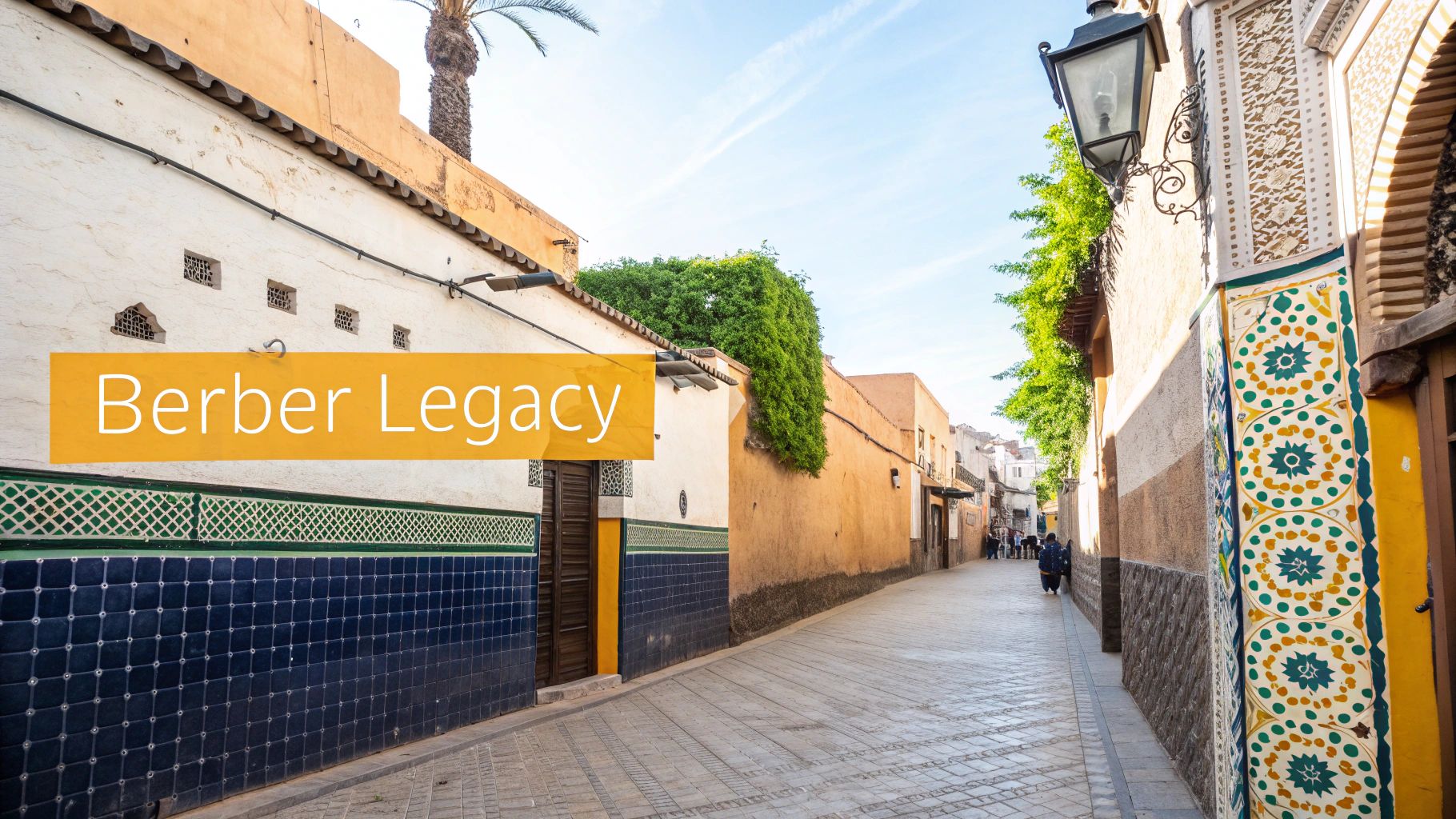
While Darija forms the foundation of Marrakech's linguistic landscape, French holds a significant position. This enduring presence is a direct result of the French protectorate era (1912-1956), a period that profoundly impacted Morocco's cultural and linguistic identity. Understanding this historical context is essential for anyone curious about the languages spoken in Marrakech.
French in Marrakech Today: Beyond the Colonial Past
French continues to flourish in several key sectors within Marrakech. It remains the language of business and administration, frequently used in official documents and government communications. Furthermore, French is prevalent in education, especially in higher learning institutions and private schools.
This linguistic divide often reflects educational attainment and socioeconomic status. French fluency is sometimes associated with the educated elite.
For those employed in the tourism industry, French is often a necessity. Many hotels, restaurants, and tour operators cater to French-speaking tourists, creating a high demand for multilingual staff. This, however, doesn't diminish the importance of Darija. Instead, it highlights Marrakech's bilingual nature, where many residents seamlessly switch between languages.
French is spoken by approximately 33-39% of Moroccans, establishing it as a vital language for official and commercial interactions. Its use dates back to the colonial period and remains particularly influential in tourist hubs like Marrakech. Learn more about Morocco's official languages here.
Code-Switching and the Marrakchi Linguistic Dance
A captivating aspect of language in Marrakech is the fluid code-switching between Darija and French. This goes beyond simply incorporating French words into Darija. It’s a dynamic exchange where entire sentences or phrases might shift between languages mid-conversation. This linguistic dance reflects the city’s unique blended identity, where both languages contribute to a rich and nuanced communication style.
French in Social Circles: Signifying Class and Global Outlook
Language choice in Marrakech often carries social weight. In certain social circles, especially among those with higher education or international connections, French is the preferred language. This isn't meant to exclude Darija speakers. Rather, it reflects a complex social dynamic where language can indicate education, social class, and a global perspective.
The Younger Generation: Reshaping the Linguistic Landscape
While French maintains a strong presence, English is steadily gaining traction, particularly among younger Marrakchis. This trend mirrors the increasing influence of global media, international education opportunities, and the growing importance of English in the tourism sector. This does not signify the decline of French. Instead, it suggests a shift in the linguistic landscape, where multilingualism is becoming increasingly prevalent. This evolving dynamic demonstrates how Marrakech continues to adapt and integrate global influences into its vibrant linguistic heritage.
Amazigh Heritage: Berber Languages in the Red City
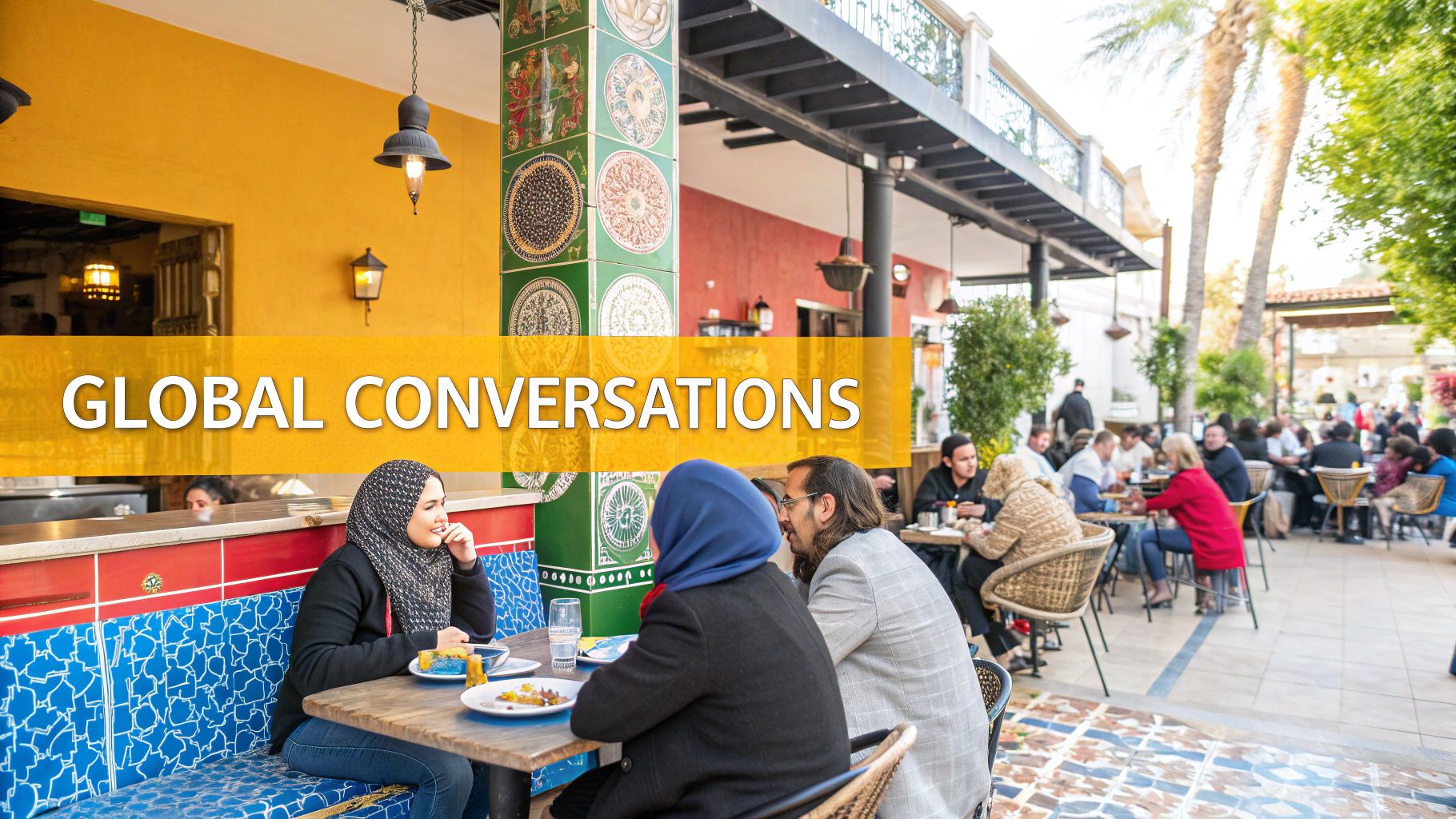
While many visitors to Marrakech focus on Arabic and French, truly understanding the city's linguistic landscape means acknowledging the presence of indigenous Amazigh languages. Often referred to as Berber languages, these tongues represent a vital link to Morocco's pre-Arab history and cultural identity. This rich linguistic heritage adds another fascinating layer to Marrakech's vibrant cultural scene.
The Resilience of Tashelhit and Tamazight
Two prominent Amazigh languages, Tashelhit and Tamazight, are spoken in and around Marrakech. Tashelhit is particularly prevalent in the Souss-Massa region, which encompasses Marrakech. While Arabic dominates the city center, venturing into surrounding villages and the Atlas Mountains reveals the enduring presence of these ancient languages. Within these Berber communities, linguistic traditions are carefully maintained, with Tashelhit and Tamazight passed down through generations.
A Cultural Renaissance: From Marginalization to Official Recognition
For many years, Amazigh languages faced marginalization. However, a recent cultural renaissance has brought them to the forefront. This resurgence culminated in the official recognition of Tamazight as a national language in Morocco's 2011 constitution. This official status has had a tangible impact on Marrakech, evident in the increasing use of Tamazight on street signs and in cultural centers. The revival also extends to Amazigh music and art, further enriching the city's vibrant cultural tapestry.
Where to Encounter Amazigh Languages in the Marrakech Region
Even within Marrakech, pockets of Amazigh linguistic heritage thrive. Cultural centers dedicated to Amazigh traditions offer visitors a chance to immerse themselves in the richness of these languages. Exploring local markets and interacting with artisans from neighboring villages provides opportunities to hear Tashelhit and other Berber dialects firsthand.
Amazigh Influence on Place Names
The Amazigh influence goes beyond spoken language, extending to the very names of places in and around Marrakech. This linguistic legacy serves as a powerful testament to the deep roots of Amazigh culture in the region. Understanding these origins adds another dimension to exploring the city. For instance, the name "Marrakech" itself is thought to derive from the Berber words "mur (n) akush," meaning "Land of God."
The Value of Understanding Amazigh Heritage
While Arabic or French might suffice in Marrakech's main tourist areas, appreciating the presence of Amazigh languages significantly enhances the travel experience. This awareness offers a glimpse into the region's complex history and cultural diversity. It allows travelers to connect with the city on a deeper level, fostering a more complete understanding of Marrakech’s linguistic landscape. By acknowledging the Amazigh heritage, visitors gain a richer appreciation for the diverse cultural tapestry of this vibrant city.
To further illustrate the linguistic diversity, the following table provides a comparison of Berber language variants found in the Marrakech region.
Comparing Berber Languages Near Marrakech
This table compares the different Berber (Amazigh) language variants found in the Marrakech region and surrounding areas.
| Berber Variant | Geographic Distribution | Notable Features | Speakers in Marrakech Area |
|---|---|---|---|
| Tashelhit | Primarily Souss-Massa region, including areas around Marrakech | Largest Berber language by number of speakers; distinct vocabulary and grammar | Significant presence in surrounding villages and communities |
| Tamazight (Central Atlas Tamazight) | Middle Atlas Mountains and surrounding areas | Considered a prestige dialect; used in education and media | Less common than Tashelhit in Marrakech itself but present in nearby regions |
| Other Berber Variants | Various smaller communities in and around Marrakech | Diverse range of local dialects and linguistic variations | Encountered less frequently but contribute to the overall linguistic diversity |
By understanding the nuances of these languages, visitors can gain a deeper understanding of the region’s rich cultural heritage. The table summarizes key differences and similarities between the variants, highlighting the complexity of the Amazigh linguistic landscape.
English and Global Languages in Tourist Spaces
Marrakech is blossoming as a global tourist destination, and with this influx of visitors, English is becoming increasingly prevalent. This is particularly true in areas regularly frequented by tourists. This section delves into the nuances of language in Marrakech, exploring where English is easily understood and where communication might require a bit more effort. We'll gain insights from local businesses catering to tourists to understand the realities of communication on the ground.
English in the Tourism Sector
English proficiency is a valuable asset in Marrakech's tourism sector. Hotels, especially those accommodating international guests, often have English-speaking staff. Many restaurants in tourist-heavy areas provide English menus and employ waiters comfortable with English. Tour operators, understanding the need for clear communication, often conduct tours in English.
However, the level of fluency can vary depending on the type of establishment. Luxury hotels and high-end restaurants generally have staff with a higher level of English proficiency. More budget-friendly options may have staff with a more basic grasp of the language. This doesn't preclude effective communication, but it does emphasize the importance of patience and clear articulation on the part of the visitor.
Navigating Marrakech with English
While English is common in tourist hubs like Jemaa el-Fnaa Square and the surrounding souks, venturing into residential areas may present some language barriers. While younger residents are increasingly learning English, older generations primarily communicate in Darija (Moroccan Arabic) and French. A basic understanding of Darija phrases, even simple greetings, can be beneficial and shows respect for the local culture.
Beyond English: Other Global Languages
Beyond English, other global languages are finding their place in Marrakech's tourism ecosystem. The historical influence of French means French-speaking tourists will often find themselves readily understood. The growing number of Spanish and Italian visitors has also prompted some businesses to cater to these languages. This multilingual environment is a testament to Marrakech's expanding international presence.
The Role of Digital Translation Tools
Digital translation tools, readily accessible on smartphones and other devices, are becoming increasingly helpful in bridging language gaps. These tools are particularly useful when navigating areas less frequented by tourists or communicating with locals who primarily speak Darija. However, relying solely on translation apps can detract from the richness of genuine cultural exchange. Combining these tools with efforts to learn basic Darija phrases can provide a more rewarding experience.
The Future of Language in Marrakech
Marrakech's younger generation is increasingly embracing English, influenced by social media, international educational programs, and global pop culture. This growing English fluency signifies Marrakech's integration into the globalized world and suggests that navigating the city with English will likely become even simpler in the future. However, the enduring importance of Darija and French in local culture means Marrakech will retain its rich multilingual character. Understanding this dynamic is key to connecting with the vibrant essence of Marrakech.
Speaking Like a Local: Essential Language Strategies
What language do they speak in Marrakech? The answer, as we've seen, is complex and intriguing. Knowing what languages are spoken is only the first step. This section explores practical strategies to transform your Marrakech experience by effectively navigating the city's diverse linguistic landscape. We'll go beyond basic phrasebooks and explore the nuances of communication, sharing insights from seasoned travelers and expats.
Culturally Appropriate Greetings: Building Bridges
Making a positive first impression begins with a respectful greeting. While a simple "bonjour" or "hello" is often sufficient, learning a few key Darija phrases can foster deeper connections. Using "salaam aleikum" (peace be upon you) demonstrates cultural sensitivity and a willingness to engage with the local language. The common reply, "wa aleikum salaam" (and upon you be peace), completes the exchange and establishes mutual respect.
Negotiation Tactics in the Souks: Bargaining Respectfully
The vibrant souks of Marrakech are a sensory delight, but the art of bargaining can be challenging. While French is often understood, using Darija phrases during negotiations can earn you respect and potentially better deals. Learning phrases like "bsh7al hada?" (how much is this?) or "meziane, walakin ghali shwiya" (it's nice, but a little expensive) shows your willingness to embrace local customs and creates a more engaging shopping experience.
Dining Delights: Enhancing Culinary Adventures
Food is integral to Moroccan culture, and ordering in Darija can enrich your culinary journey. Even simple phrases like "shukran" (thank you) or "la bes" (you're welcome) can brighten interactions with restaurant staff. Asking "shnu katnsah?" (what do you recommend?) can uncover hidden culinary gems not listed on English or French menus.
Navigating Social Expectations: The Importance of Politeness
Politeness is highly valued in Moroccan culture. Understanding the nuances of polite expressions can make interactions smoother and more meaningful. Using "afak" (please) when making requests softens your language and demonstrates respect, especially when interacting with older generations or in traditional settings.
Emergency Communication: Preparing for the Unexpected
While hopefully unnecessary, knowing essential phrases for emergencies offers peace of mind. Learning "ana mrid" (I'm sick) or "3awnini" (help me) in Darija could be crucial in unforeseen circumstances, empowering you to navigate unexpected challenges confidently.
Transportation Terminology: Simplifying Your Travels
Whether hailing a taxi or negotiating a carriage ride, understanding transportation vocabulary simplifies travel. Knowing how to say "feen kayn…" (where is…) followed by your destination in Darija can significantly aid navigation.
Digital Resources: Utilizing Technology for Language Assistance
Numerous digital resources offer language learning and translation support in Marrakech. Mobile apps provide phrasebooks, pronunciation guides, and even offline translation capabilities, proving invaluable for navigating everyday situations and facilitating smoother communication.
Ready to experience the magic of Morocco? Rich Lion Properties can help you find the perfect property in Marrakech and beyond. Whether you seek a luxurious riad, a charming apartment, or a vibrant commercial space, our expert team provides local expertise and guidance. Visit us at Rich Lion Properties to begin your Moroccan adventure.
